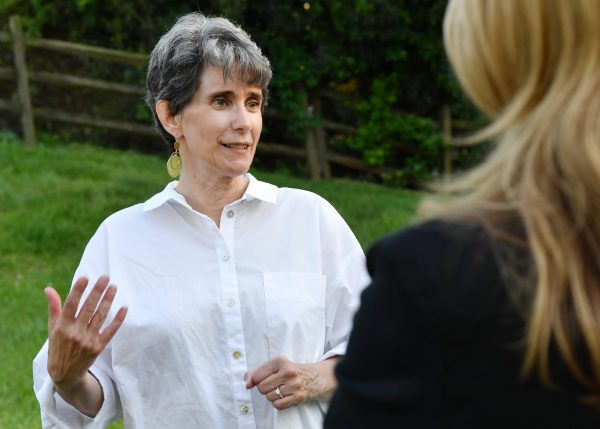Removing Obstacles for Students with Learning Science

by: Staci Bradburi, Dean’s for Impact
Lesli Kathman sat in class at UNC Charlotte and emitted a small sigh as her professor said those dreaded words: “You’ll remember this from high school.”
In fact, she did not remember much from high school, because 30 years had passed between graduation and when she entered the university’s educator-preparation program.
“Many of these ideas weren’t around 30 years ago, and they certainly weren’t present in the under-resourced schools in rural Alabama that I attended,” she explained.
As an adult attending college for the first time in her fifties, she knows firsthand that instructors’ assumptions about what students bring to the classroom can be detrimental to learning if they’re not aligned with what the students actually bring. That’s why, in her own classroom, she’s planning to take a different approach — one that’s based on learning science.
One of the core principles of learning science that Lesli wants to draw on her in instruction is the idea that learning can be impeded if students are confronted with too much new information at once. To manage the learning load, she creates opportunities for students to master and build fluency with small chunks of new concepts before asking them to apply the learning in more complex settings.
She’s seen this intentional approach to instruction modeled by Dr. Hilary Dack, an associate professor of middle-grades education at UNC Charlotte who is part of a group of faculty that has spearheaded the university’s effort to better incorporate learning science into teacher preparation.
“Dr. Dack will have us practice the thing we’re learning for low stakes, and then we’ll do a big project where we demonstrate what we know. We’ve gotten feedback before we ever get to that point,” Kathman said. “Seeing that modeled is one of the things that has really changed what kind of teacher I am. It’s not just a matter of learning better — there’s also an equity aspect. When kids are struggling, or it’s harder for them — or for an older student like me who doesn’t have the background knowledge — those instructional strategies give you time to build proficiency before it really counts. That’s been a huge takeaway from her classes.”
In addition to sequencing the introduction of new information, Kathman is also thoughtful about interleaving concepts, which is weaving together different types of problems so that students practice several related skills sequentially, rather than just one at a time. She had an ‘aha!’ moment when she first learned about interleaving in Dr. Dack’s course.
“I told her, ‘Now I finally understand why I didn’t do well in math!’” In high school, Kathman aced math homework and chapter quizzes, but never performed well on the final tests, because she was seeing the math problems – which covered many different concepts — all mixed up for the first time.
“I didn’t understand it at a deep level because they didn’t mix the problems up while we were learning. So the first time I encountered the problems all mixed up was on the final test,” she said. Going forward, Kathman is committed to interleaving problems throughout her own math instruction, so that her future students don’t stumble on the same obstacles that she did back in Alabama.
“I like having names for the learning science. The biggest thing about all this as a whole is feeling like I have a better sense of what’s happening inside the kids’ heads,” Kathman said. “I have a background in science, so knowing ‘This is what’s happening, and we know this because it’s scientifically understood’ – I feel like I can shape what I am doing with my kids to maximize the time I have with them.”